Scotland vs. Ireland is not just a notable rivalry on the football pitch or rugby field. It’s also a fascinating choice for visitors looking to explore these Celtic neighbors.
Separated by the narrow Irish Sea, both countries have shared history and scenery. In both, you’ll find mist-clad mountains, placid loughs, and rival cities: Edinburgh vs. Glasgow, and Dublin vs. Cork or Belfast.
Weather
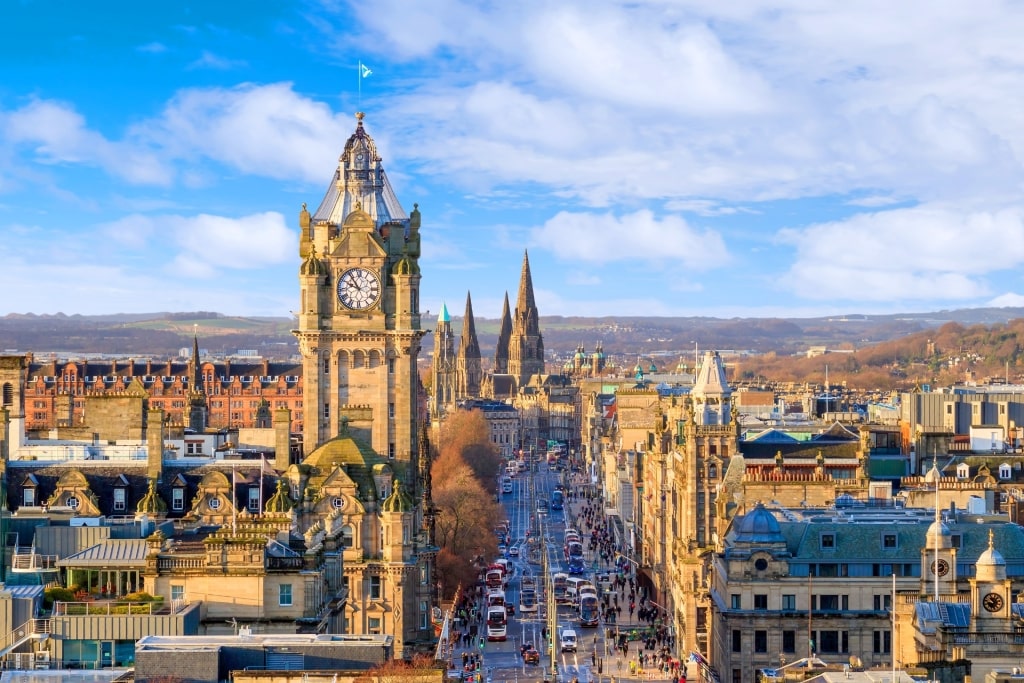
Edinburgh, Scotland
Scotland has a temperate maritime climate, with cool summers and mild winters. Its east, where you’ll find Edinburgh, tends to be drier, while the west sees more rainfall.
Average summer temperatures range from 59-63°F, with the Highlands often experiencing snow in winter. The northern islands have the harshest weather, with strong winds year-round.
Northern Ireland is only 20 miles from western Scotland at the narrowest point, so has similar weather. That means moderately cool, wet conditions throughout the year.
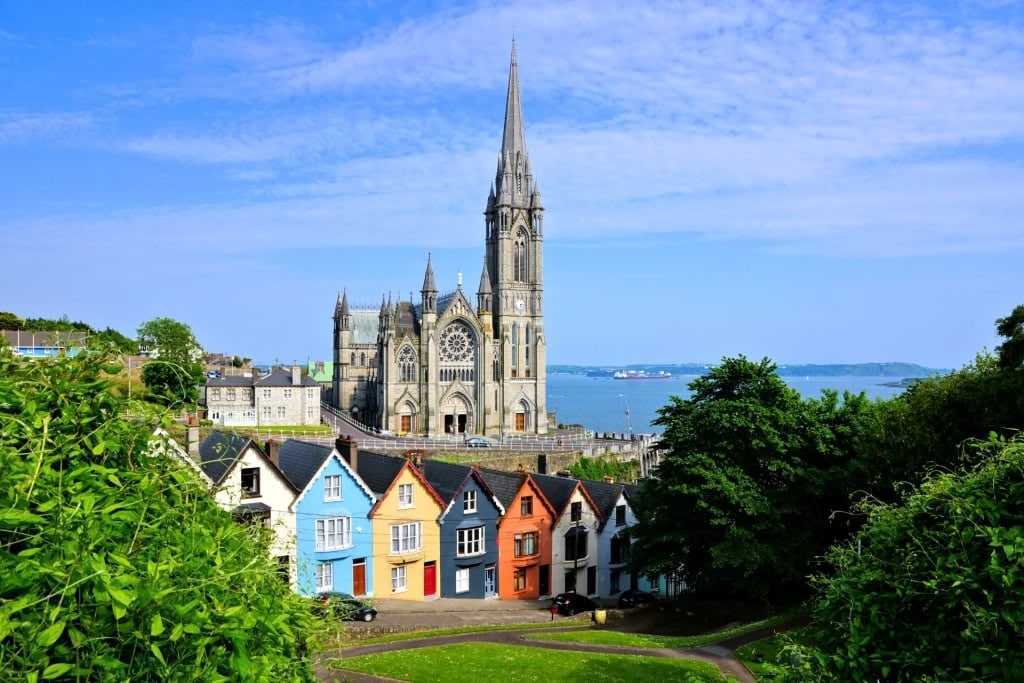
Cork, Ireland
While noted for its rain, Ireland has a similar maritime climate to Scotland. The southern regions around Cork tend to be warmer than the north.
Ireland does have gentle rainfall year-round, helping create its famous green landscape. However, it’s very unpredictable and you might experience weeks of glorious sunshine in spring, summer, or fall.
Location
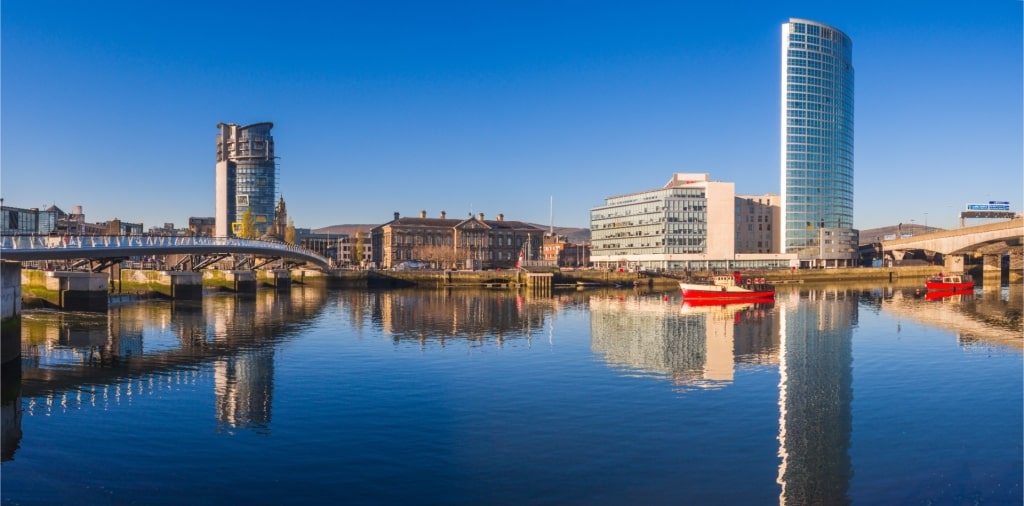
Belfast, Northern Ireland
Scotland is on the northern part of the British mainland, the large island known as Great Britain. It’s part of the United Kingdom, along with England, Wales, and Northern Ireland.
Northern Ireland is on the north-east part of the island of Ireland. Somewhat confusingly, Ireland is also the name of the independent country that takes up most of the island.
Scotland has more coastline than France, despite being one-fifth the size. It stretches for 10,200 miles, if you include all its many islands, including Shetland.
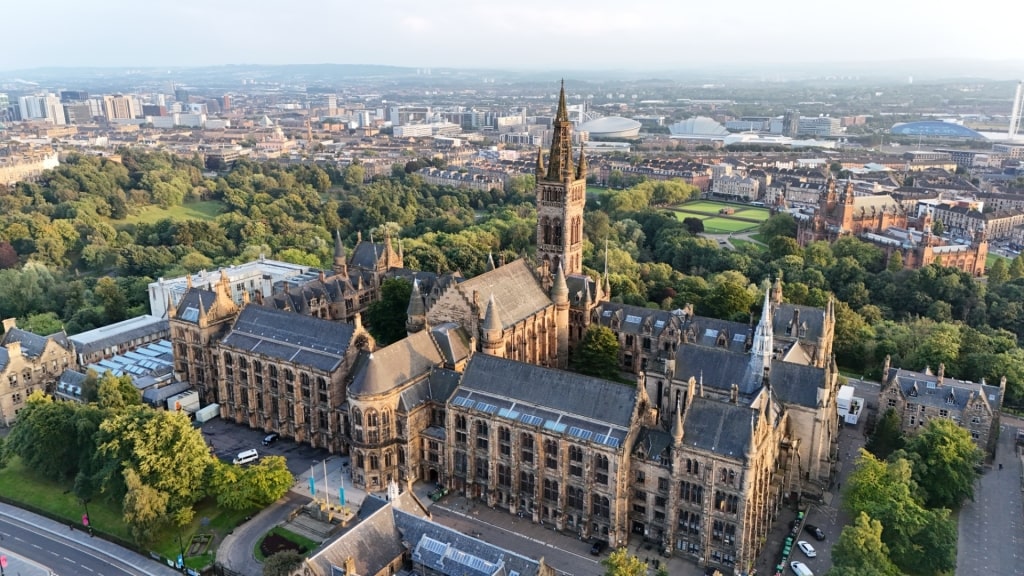
Glasgow, Scotland
That vast coast encircles a country that is only 190 miles wide and under 200 miles from north to south. You can drive from Edinburgh in the east to Glasgow in the west in about 90 minutes.
Ireland, with Northern Ireland, is slightly larger than Scotland. However, it’s still technically possible to drive around its whole coastline in under a day.
History
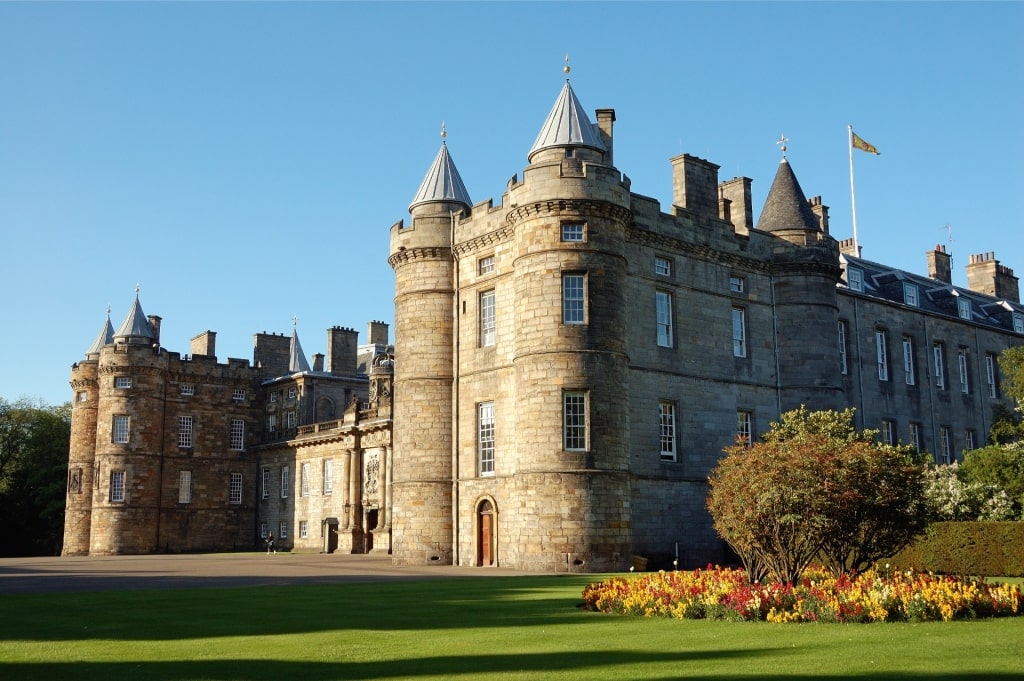
Holyrood House in Edinburgh, Scotland
Until Irish Independence in 1922, both Ireland and Scotland were under British rule and subsequently still share many cultural links. Scotland also has deep ties to Northern Ireland through a common Ulster-Scots dialect and much other history.
Scotland and Ireland are Celtic nations, with a similar Gaelic/Irish language, music, and culture. Both suffered British attempts to suppress their own native culture and language.
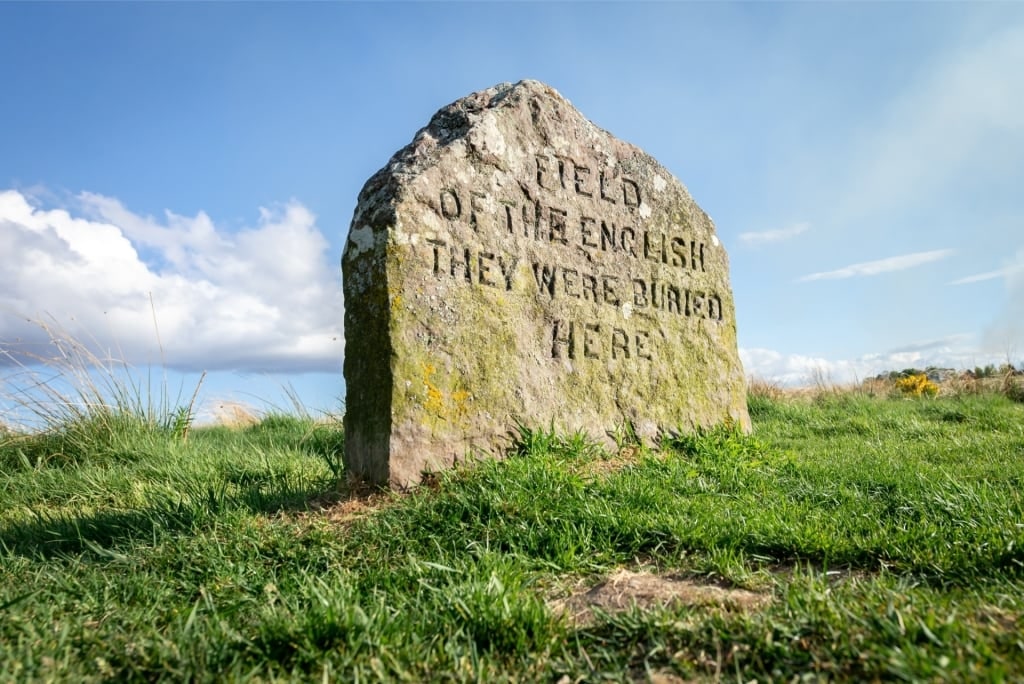
Culloden Battlefield in Inverness, Scotland
At the bleak battlefield of Culloden, near Inverness, the Highland Clans lost a one-sided battle against British Redcoats in 1746. One result was the banning of tartan clothing.
A legacy of such history is a strong Scottish Independence movement. Since 1999, it has had its own parliament with devolved powers.
However, Scotland is still ruled by the British monarch, currently King Charles III. You can visit Holyrood House in Edinburgh to see his official residence in Scotland.
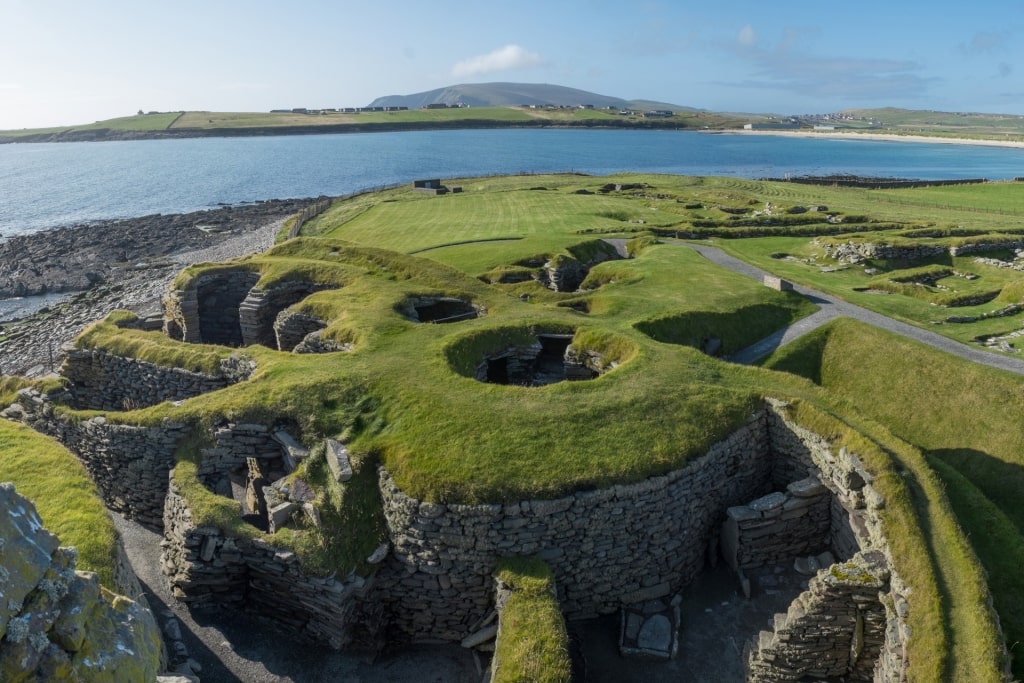
Jarlshof Ruins, Scotland
In the Shetland Islands, the Jarlshof Ruins take you as far back in time as the Bronze Age. A Viking longhouse reflects centuries of Norse influence, with Norway being closer than the Scottish mainland.
Northern Ireland remains torn between British and Irish identities that most recently saw the violent “Troubles” from 1968 to 1998. Belfast’s Crumlin Road Gaol brings that grim era to life in an informative, moving way.
Ireland’s history was shaped by major events such as the Great Hunger from 1845 to 1852. It won its independence from Britain through armed rebellion and a Civil War from 1916 to 1921 that saw Northern Ireland created.
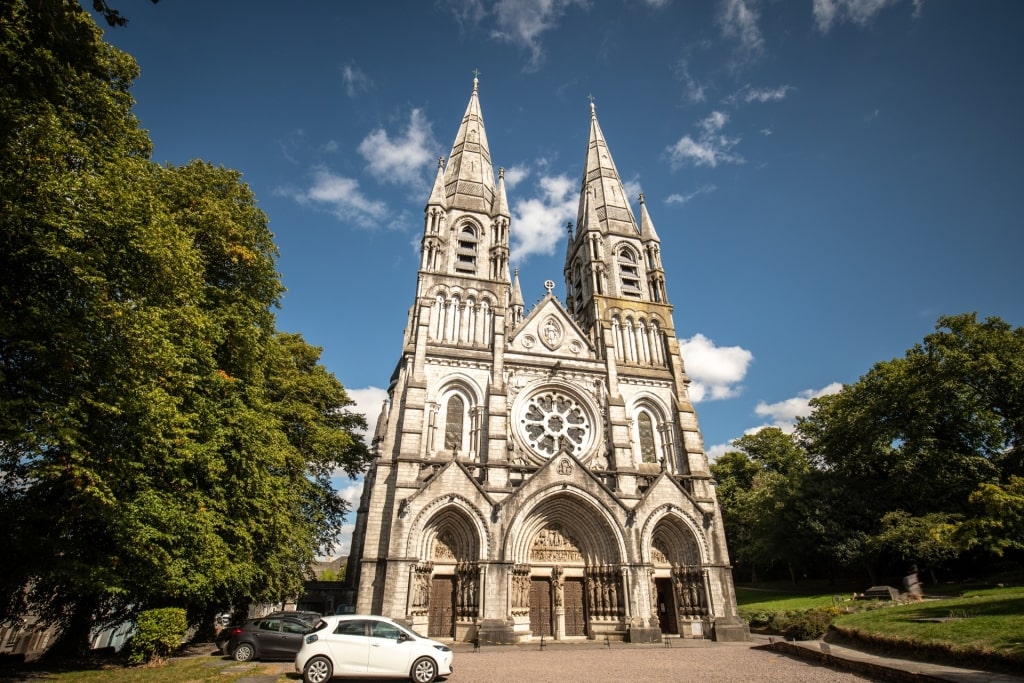
St. Fin Barre’s Cathedral in Cork, Ireland
After Independence, Ireland embraced its Catholic identity, suppressed under English rule. Cork’s St. Fin Barre’s Cathedral, an impressive Protestant icon in a Catholic city, offers insights into that story.
In Waterford, the Viking Triangle, anchored by the Anglo-Norman Reginald’s Tower, delves into the city’s roots. Admire the many medieval treasures in the city’s museums as you learn more.
Natural Wonders
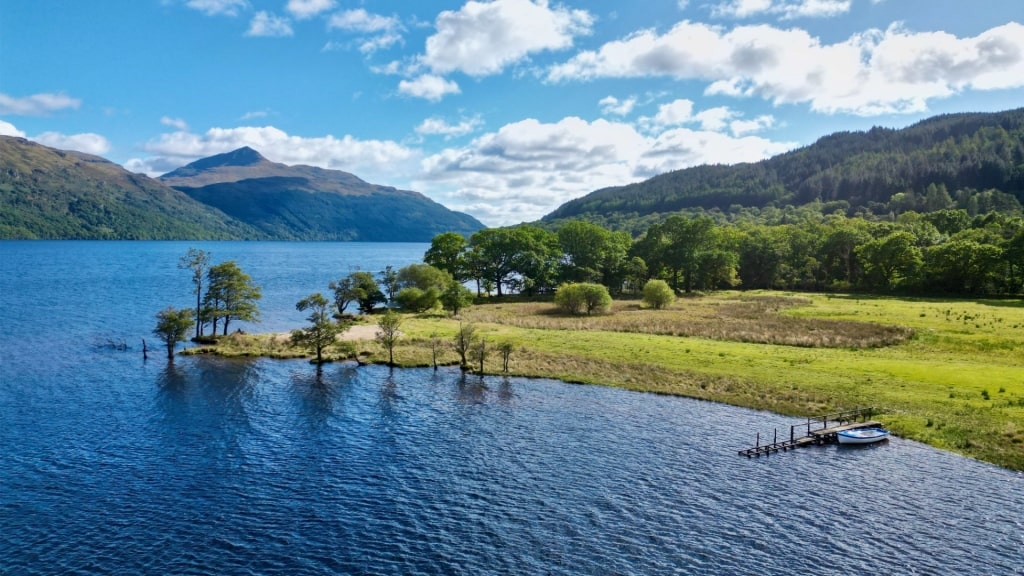
Trossachs National Park, Scotland
When planning a trip to Ireland and Scotland, it’s worth noting how rich both are in natural beauty. In Scotland, Arthur’s Seat in Edinburgh is an ancient volcano with panoramic city views. Near Glasgow, Loch Lomond and The Trossachs National Park feature pristine lakes and mountains.
Inverness is a gateway to Loch Ness, Britain’s largest lake by volume. Take a cruise in search of the legendary Loch Ness Monster while you enjoy the spectacular views.

Sumburgh Head, Scotland
Lerwick is a base for visiting Shetland’s dramatic cliffs and seabird colonies. A key site is Sumburgh Head, with its lighthouse, visitor center, and nature reserve.
In Northern Ireland, Belfast is a start point for the Antrim Coast Road, one of the world’s most scenic drives. It will take you to some of Ireland’s best views, with dramatic castles and endless beaches.
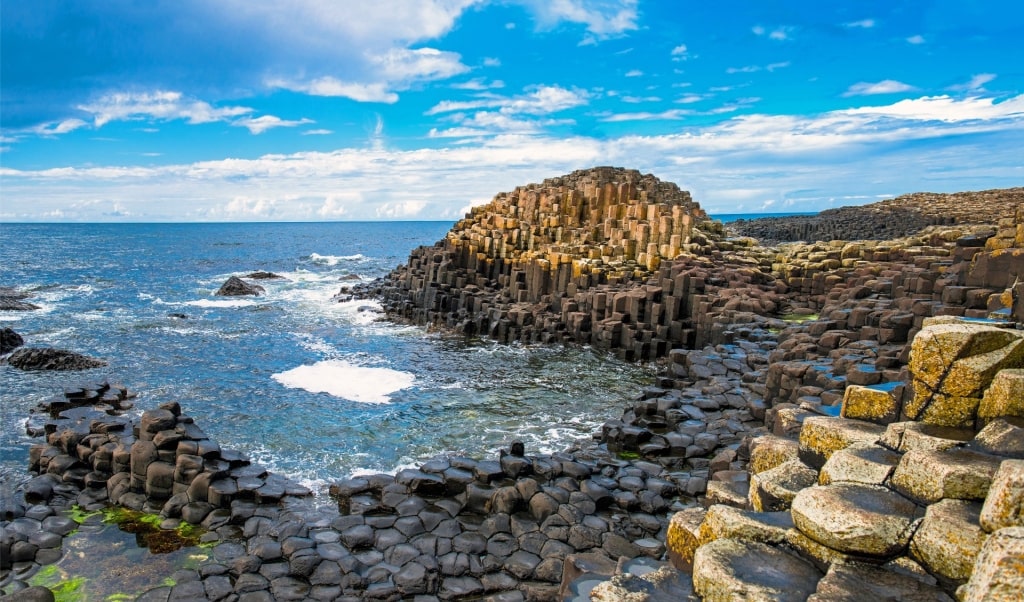
Giant’s Causeway, Northern Ireland
At its end is the Giant’s Causeway, with its 40,000 basalt columns emerging from the Irish Sea. In calm weather, or in rough, this is a memorable sight, making it one of the best places to visit in Ireland.
Ireland shows off its famed “40 Shades of Green” in a countryside of green fields, rolling hills, and winding roads. This landscape is at its peak in Killarney, where the lakes are a major highlight.

Ring of Kerry, Ireland
Drive the Ring of Kerry to see dramatic cliffs, romantic islands, and wild beaches. Cork’s coastline is equally picturesque, the start of the rugged Wild Atlantic Way that runs as far north as Donegal.
Read: Best Beaches in Scotland
Cities
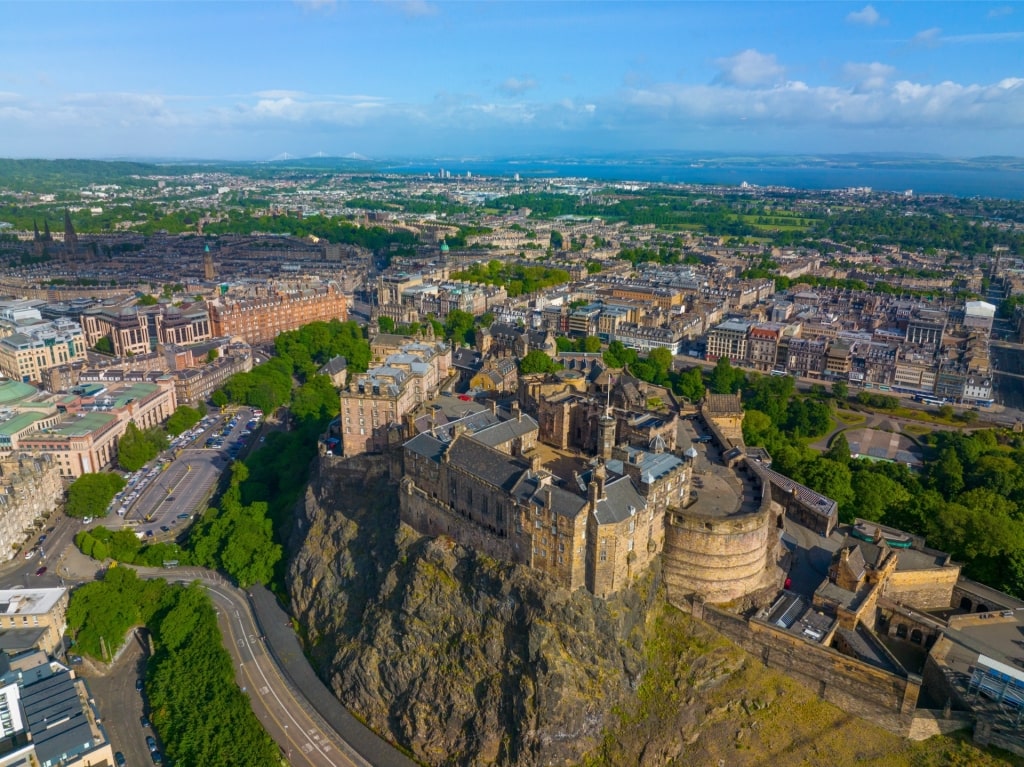
Edinburgh Castle, Scotland
Edinburgh, Scotland’s historic capital, is a handsome city, dominated by Edinburgh Castle sitting high on Castle Rock. Holyrood Palace and the Old Town—now a UNESCO World Heritage Site—are also attractions.
On the Royal Mile, you’ll find more tartan shopping than you can dance a jig to. Find a kilt, bonnet or a full Highland costume to stand out at any special occasion.
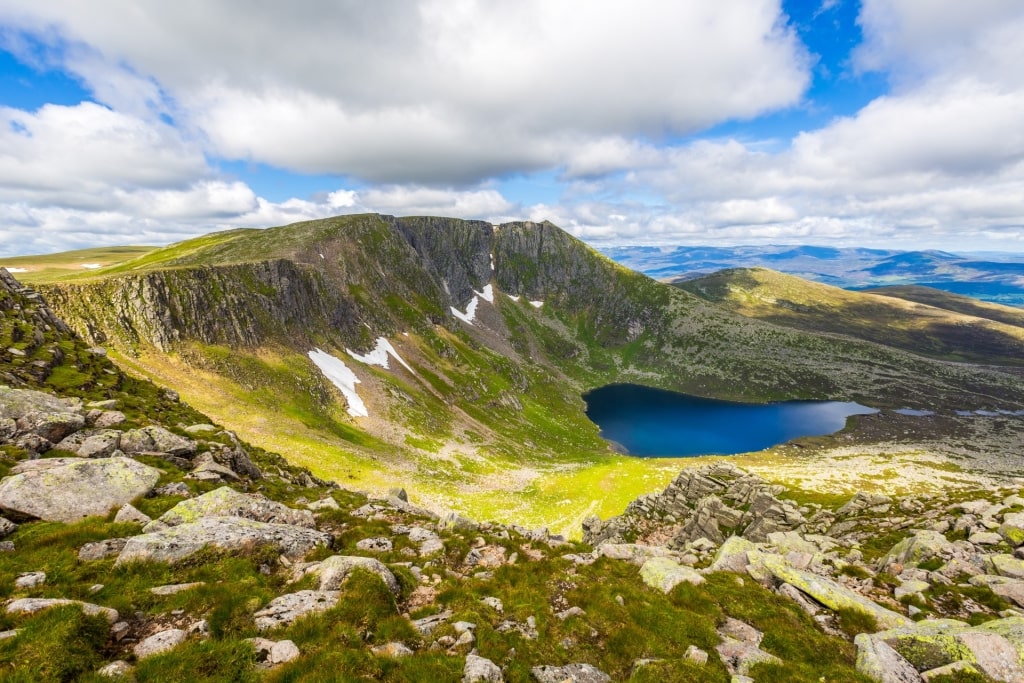
Cairngorms National Park, Scotland
However, Inverness is the real capital of the Highlands and a gateway to its dramatic mountain scenery. The Cairngorms National Park will give you a taste for the even wilder, remoter parts of Scotland.

Lerwick, Scotland
There are few remoter places than the Shetland Islands, where the capital, Lerwick is the UK’s northernmost major settlement. Built on the fishing industry, it has strong links to Norway, which you can explore in the Shetland Museum.
Glasgow is another hard-working city, built on heavy industries such as shipbuilding. It’s known for its Victorian architecture, lively pubs, and street art.
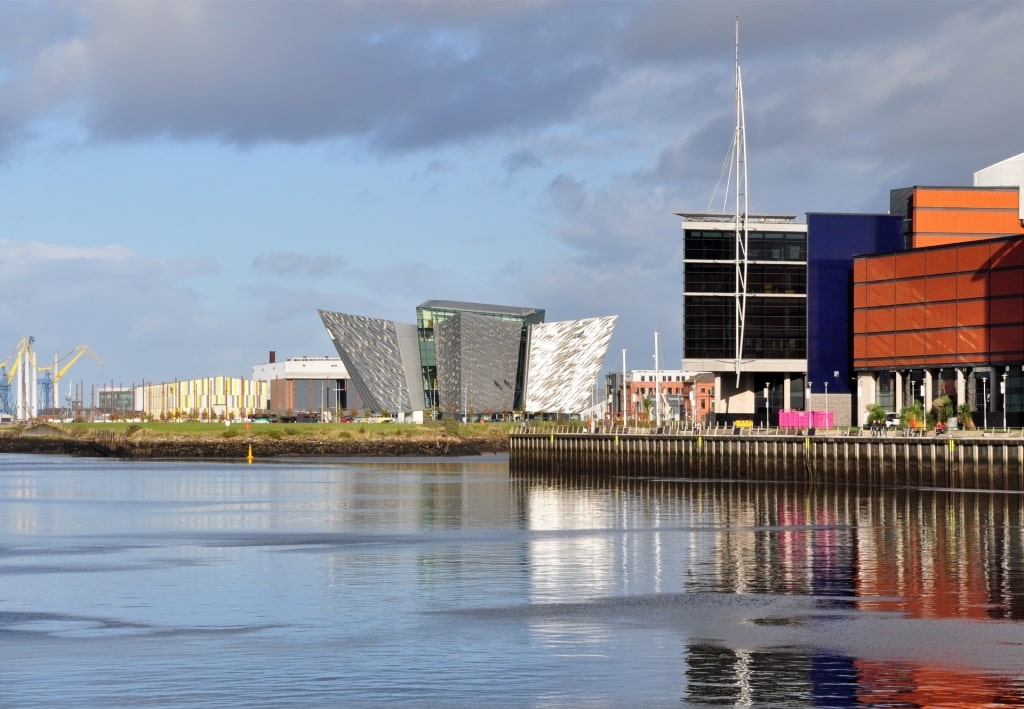
Titanic Belfast, Northern Ireland
The capital of Northern Ireland, Belfast has a scenic waterside setting and an industrial past. The Titanic Belfast museum tells part of its story, while tours of the mural-rich Peace Wall will add even more color.
Dublin, Ireland’s capital, has a rich cultural and historical character. Trinity College, with the Book of Kells, the Guinness Storehouse, and the city’s many, many pubs are among key attractions.
Cork is a charming city, built on the River Lee and its canals. As Ireland’s second city, with a youthful student population, it’s lively and quirky.
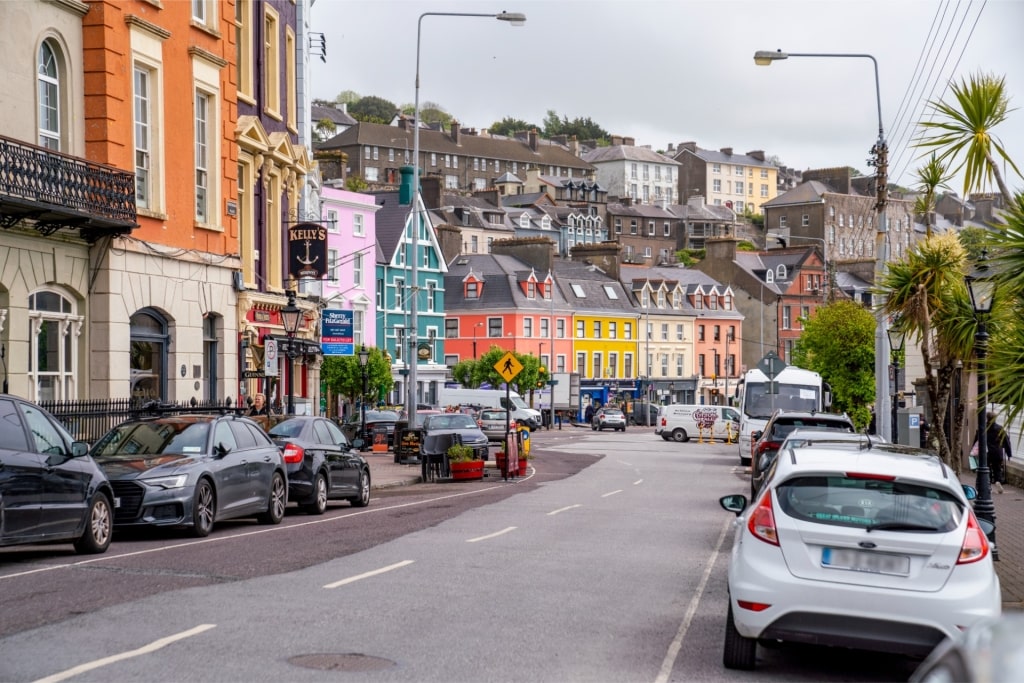
Cork, Ireland
The Cork Butter Museum, Crawford Art Gallery, and Cork City Gaol are all worth a visit. In the 18th and 19th centuries, Cork was a major port for shipping Irish butter worldwide.
Waterford is Ireland’s oldest city, known for its Viking history and Waterford Crystal. It’s a good base for exploring the scenic Copper Coast.
Castles

Blarney Castle near Cork, Ireland
There’s no winner in any Scotland vs. Ireland debate when it comes to castles. Both countries are full of picturesque examples with as many turrets and battlements as you could wish for.
Prime examples are Scotland’s Edinburgh Castle and Stirling Castle near Glasgow. Inverness Castle sits in beautiful grounds on a cliff overlooking the River Ness.
In Lerwick, you’ll find ancient and “modern” fortifications. Broch of Clickimin is a Bronze Age stone tower, which makes Fort Charlotte, dating to 1665, look relatively young.

Carrickfergus Castle, Northern Ireland
Carrickfergus Castle in Northern Ireland is massive and intimidating—but sits in a lovely harborside setting. Built in 1177, it’s one of the best preserved Norman fortifications on the island of Ireland.
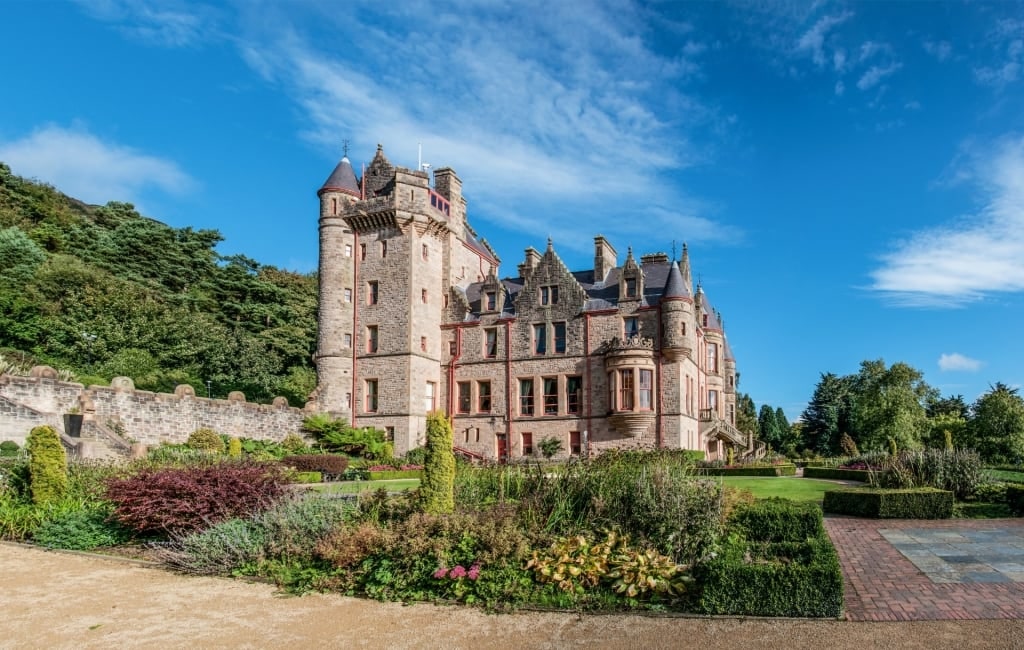
Belfast Castle, Northern Ireland
Belfast Castle has a great view over Belfast Lough from its setting on Cave Hill. A large, imposing mansion, its gardens are worth a visit on their own.
Northern Ireland also has the impossibly romantic Dunluce Castle, heavily linked to the Scottish McDonald clan. Perched dramatically on a cliff edge over rough seas, it’s a photographer’s dream.
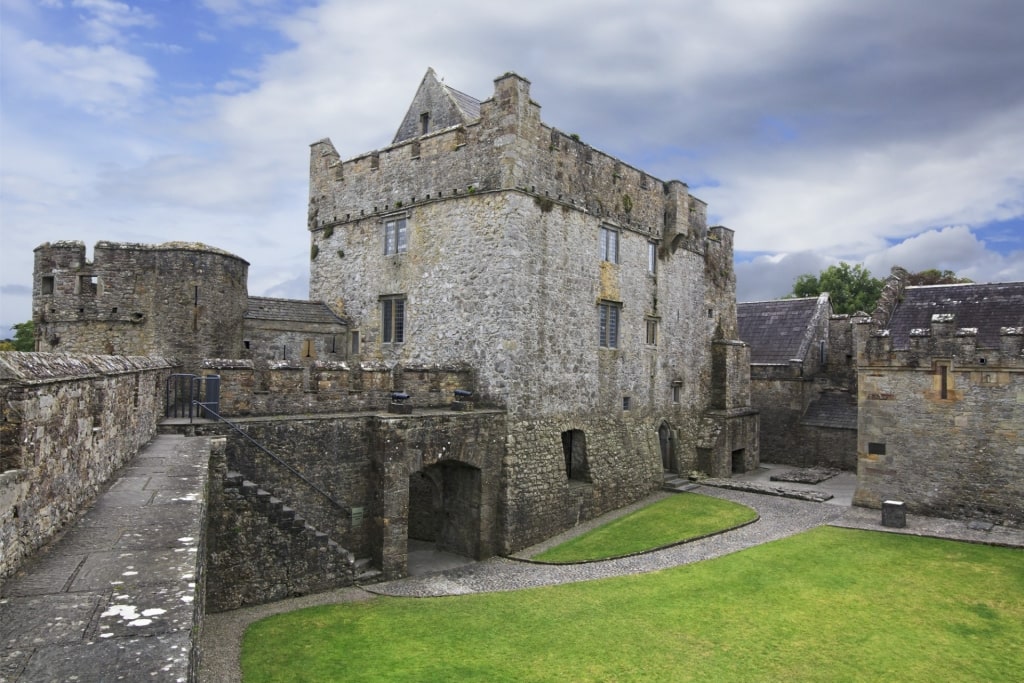
Cahir Castle, Ireland
Among the castles of Ireland, many are now actually grand houses. Notable exceptions are Cahir Castle near Waterford and Trim Castle in Meath.
Ross Castle in Killarney and Blarney Castle near Cork are popular attractions. Ross sits by the Killarney Lakes, while Blarney has its famed “Blarney Stone” to kiss.

Kilkenny Castle, Ireland
Kilkenny Castle is a fortified great house stuffed full of Victorian decor. Dublin Castle, once the center of British rule in Ireland, sits at the highest point in the city.
Food & Drink
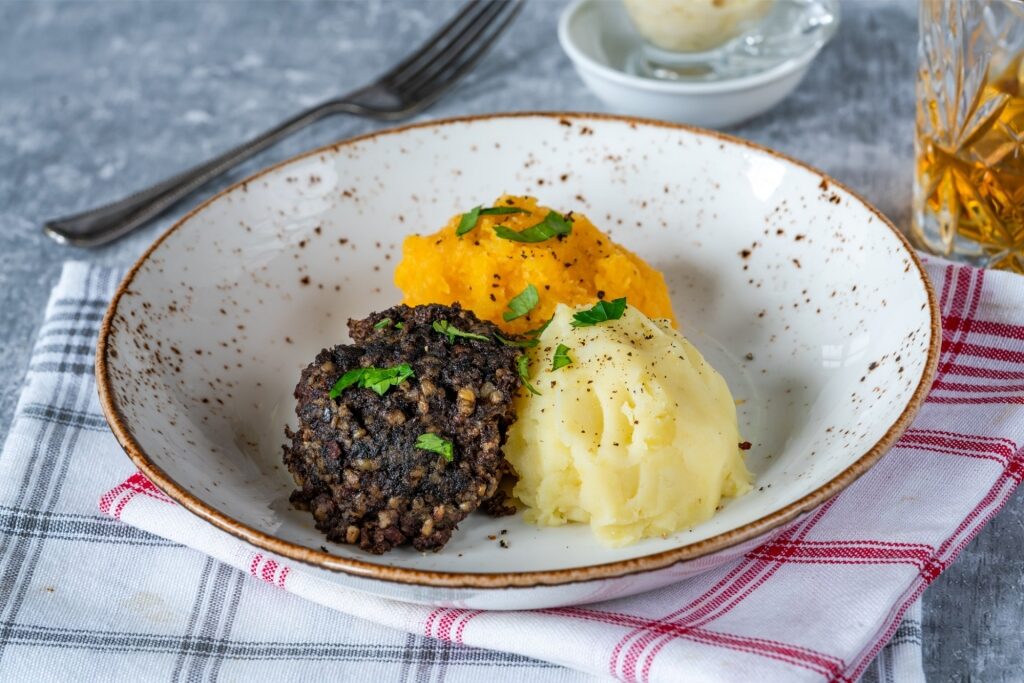
Neeps and tatties
Edinburgh has every type of food offering from Michelin-starred restaurants to busy pubs. These might serve up traditional Scottish dishes such as “neeps and tatties”—turnips and potatoes.
That’s often served with haggis, a dish you will hear a lot about. Made of spiced meat and offal, it tastes much better than it sounds—although it admittedly doesn’t sound great.
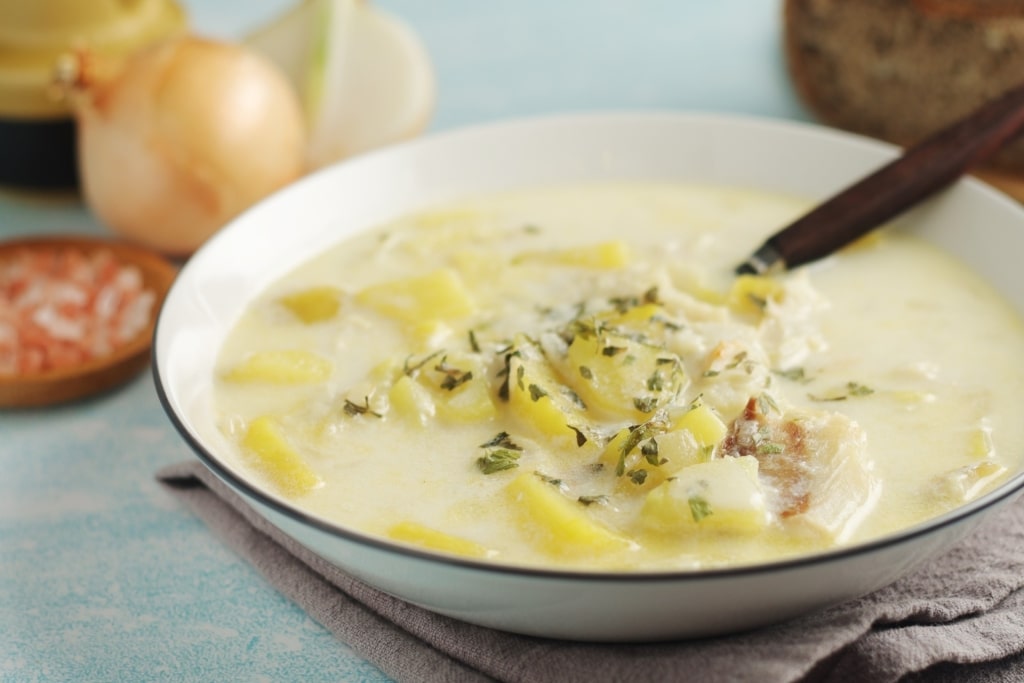
Cullen skink
Glasgow has long had a reputation for excellent seafood and, more recently, for modern Scottish cuisine. Inverness is the place to find tasty Highland beef and fresh salmon.
As a North Sea fishing port, Lerwick has exceptional seafood including salmon and mussels. There are more fish landed in Shetland than in England and Wales combined.
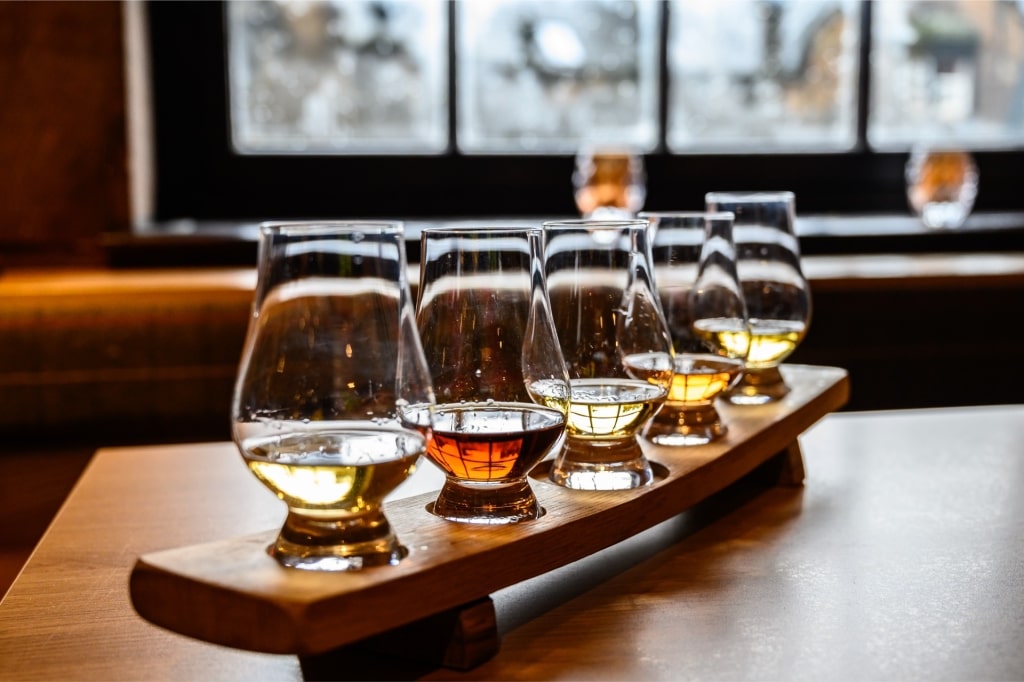
Scottish whiskey
Scotland is the home of the world’s finest whiskies. Don’t leave without touring a distillery to discover why.
With a Scottish breakfast, you’ll also find out what proper porridge tastes like. A wee dram of whisky added to the oatmeal is always an option.
Northern Ireland has become a major food destination in its own right. Don’t leave without trying the Ulster Fry breakfast or at least a “bacon soda”: bacon between two slices of soda bread.
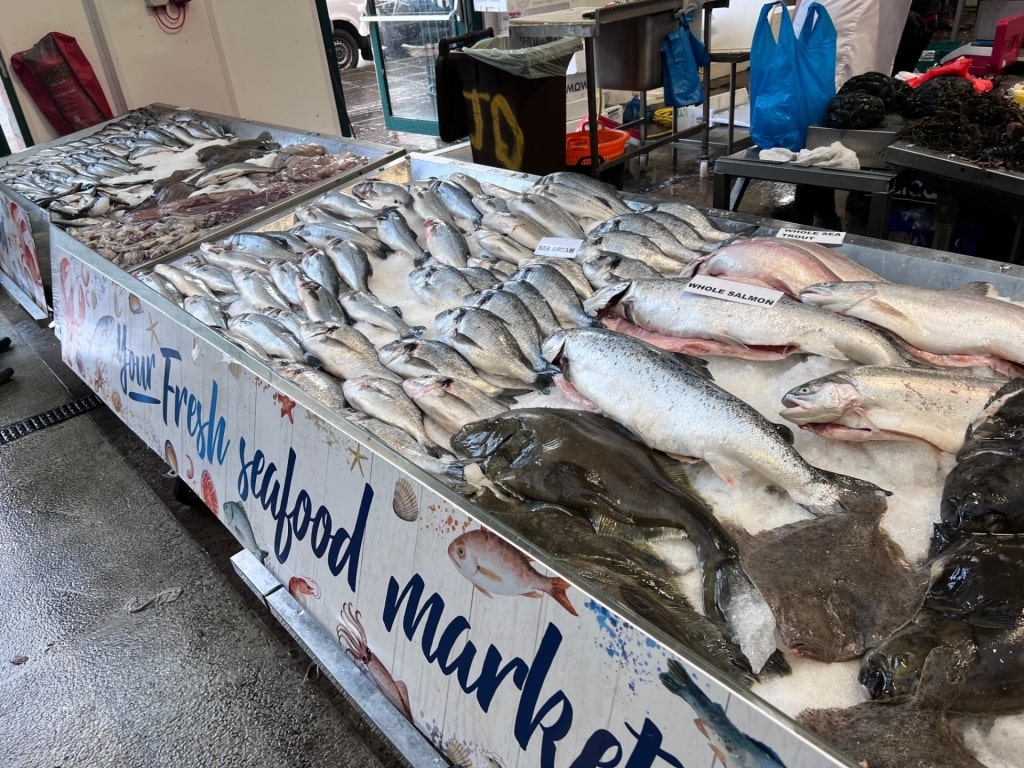
St. George’s Food Market in Belfast, Northern Ireland
Belfast has many innovative restaurants and many good pubs serving hearty meals. St George’s Food Market will give you an idea of the great produce they work with.
Cork is considered Ireland’s food capital with its English Market and farm-to-table restaurants. Its fish and chip shops will also give Scotland’s a run for their money.
Waterford offers excellent seafood and its famous “blaas”, soft and floury bread rolls. Blaas are perfect with lots of butter and thick Irish bacon.
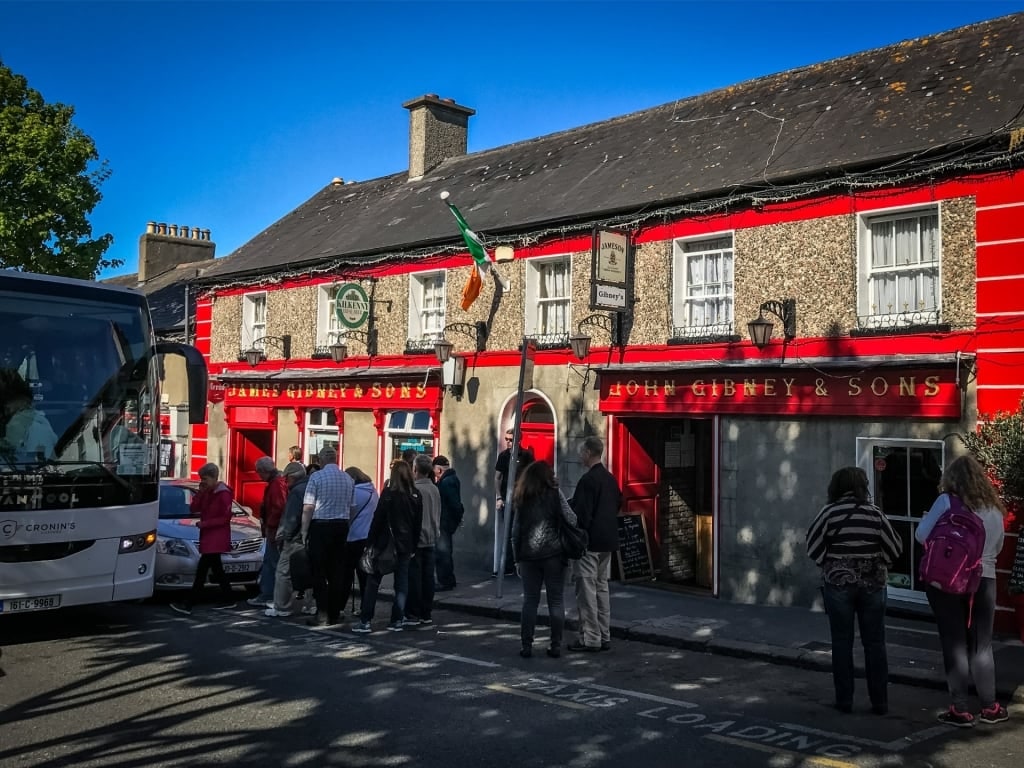
Irish pub
Ireland’s pubs need no introduction but their food offerings might surprise you. Alongside Guinness stout, Irish whiskey, and Irish music, you’ll find dishes such as Irish Stew and fish & chips.
Practicalities
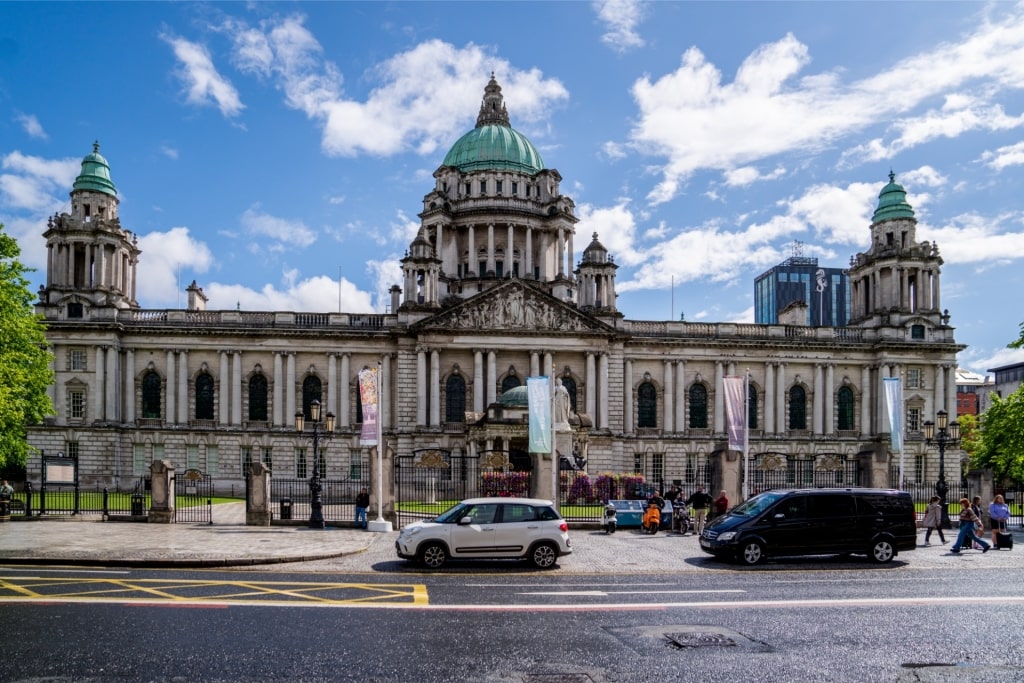
Belfast, Northern Ireland
Scotland uses the pound sterling as its currency, the same as the rest of the UK but with its own bank notes. Northern Ireland, as part of the UK, also uses sterling.
Ireland is in the European Union, so uses the euro. Outside Dublin, the country is generally less expensive than Scotland for food and accommodation.
In Scotland, Ireland, and Northern Ireland, driving is on the left. The Scottish Highlands and Irish countryside can be challenging—but thrilling—for drivers not used to narrow, winding, and sometimes single-track roads.
Read: Ireland Travel Tips
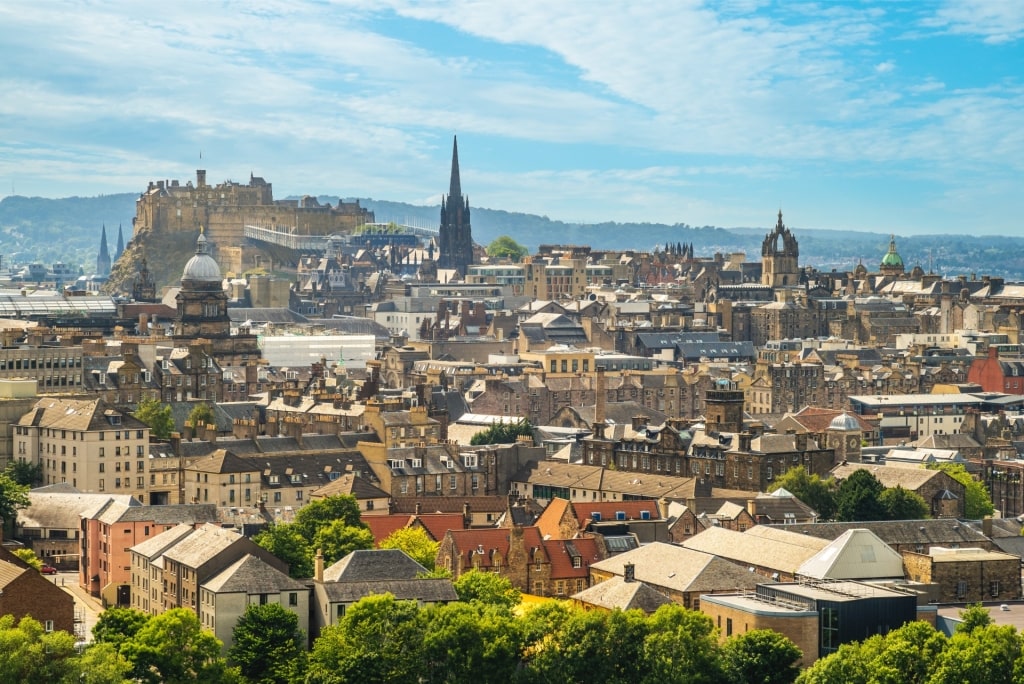
Edinburgh, Scotland
Are you ready to choose between these two great destinations? Better still, why not visit both? Browse Celebrity’s cruises to Scotland and Ireland and plan your next big adventure.


